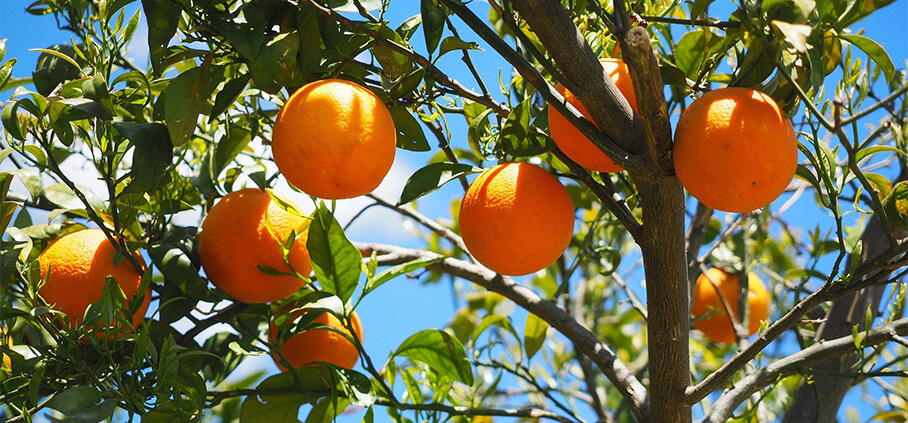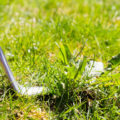
Orange trees are a perfect addition to your garden! They are beautiful and produce tasty fruit. Orange trees are best cultivated in warm climates but can also grow in cooler climates when put in big pots and placed in a greenhouse. If you want to have a healthy orange tree and quality fruit, though, it is essential to prune it right.
There are numerous benefits to this agricultural technique. It can control the tree’s growth and maintain its shape. Branch-wise, pruning can prevent crossing and crowding of main branches, branch rubbing, and fruit damage, as well as control water shoots. Trimming back the crown also improves air circulation and light access, and the reduced growth makes access and harvesting far easier.
When you should prune orange trees
There are several criteria to determine the trimming season, but we will look at the two most important factors in detail:
- Age – In young trees, pruning training can be carried out at any time, provided there are no low temperatures and danger of frost. As for adult trees, they should be pruned after fruit collection. In the event of lower temperatures, pruned trees suffer more than those that have not yet been maintained.
- Weather – In the subtropics, it is recommended to trim no later than the end of autumn because of the risk of frost during new growth. In the tropics, however, where winter is mild, orange trees can be pruned at any time of the year. Still, the cup grows faster when it is trimmed in late spring and summer rather than in autumn and winter.
How to trim your orange trees
Having the right equipment for this procedure is essential for trimming any tree, especially orange. Listed below are some must-haves that will ease your job of pruning and maintaining your orange citrus:
- Anvil secateurs – they are optimal for trimming woody limbs. Use them on branches up to 10mm in thickness and make sure they are sharp and clean.
- Bypass ratchet lopper – this tool is ideal for cutting branches up to 50mm thick. It usually comes with extendable handles which will help you reach high branches.
- Pruning saw – it will allow you to remove thicker branches up to 90mm. Using this saw will help you make a clean cut and will pose no harm to the citrus tree.
Trimming equipment must be sterilised after every use to make sure no diseases are spread from one tree to another!
Pruning an old and overgrown orange tree
Normally, the mature orange tree needs to be pruned to be kept from overgrowing and to ease the harvesting process. Heavy trimming is not recommended unless the tree has been neglected and has become overgrown. If that’s the case, it is important to prune it properly.
The main goal is not to go overboard and make only thinning cuts. Remove dead, damaged or diseased branches that grow into the crown of the tree and rub against each other. This method will allow sunlight to easily go through, which in turn will stimulate the tree to produce new shoots. It is a great way to revitalise your orange tree, without heavy pruning and the risk of sunburn.
Pruning an orange tree sapling
Nursery trees must be trimmed immediately after they’ve been planted, otherwise, the tree may not establish. For the initial pruning, you must cut about 10 cm of the tree’s branches in order to create a balance between the root system and crown development. This will help stabilise the plant by giving it a strong core and it will stimulate steady and healthy growth.
You’ll need to do additional pruning during the plant’s first year is to eliminate sprouts or suckers. It is best to do this by hand as there will be minimum scarring on the trunk. Also, if there are single-point branches that grow unevenly or rub against each other, cut them off and leave only the best-positioned ones. This way you’ll “train” your tree sapling and control its shape and size. Another thing to do in the first year of your young tree is to remove any fruit so all the energy can go into growing instead of fruiting.
Pruning a dwarf orange tree
Apart from their size, dwarf orange trees are not all that different. These miniature trees can bring a nice touch to your patio or your office. Like with regular orange trees, annual pruning is necessary to keep their shape, increase fruit quality, and maintain general health.
It’s recommended to prune dwarf orange trees after fruiting or during harvest to prevent accidentally cutting healthy, fruit-producing limbs. Follow this helpful guide and learn how to trim your plant properly:
- Sterilise the tool you’re using with a solution of 9 parts water and 1 part bleach. Carefully wash the tools and let them dry before using them again.
- Remove broken, damaged or diseased branches. Discard them to prevent spreading to other plants and don’t forget to sterilise the tool again.
- Examine the plant and look for new growth on the ends of branches. Then, trim them at the leaf closest to the tip. Cut off any new branches that are growing toward the centre of the crown and have the potential to cross.
- Trim branches crossing in the centre of the orange tree to make sure light comes into the canopy.
- Next, remove suckers stemming from the root system or cut off the graft point to eliminate them completely. Discard the shoots as they are not related to the fruit production process.
When trimming a dwarf orange tree, it is vital not to damage the bark, as cuts and wounds increase the chance of disease spreading. To prevent that, make sure you cut the branches at their base, where they connect to a bigger branch or the trunk of the tree.
Takeaways
- Pruning is the process of removing unhealthy, unwanted, and badly positioned branches to improve the overall condition of the trees;
- Annual trimming leaves the canopy open so that light can get inside;
- Use only well-sterilised saws and secateurs;
- Remove no more than 20% of the branches in a season;
- The advantages of regular trimming can be reduced if the trees are not maintained at the right time and in the proper way;
- Even though dwarf orange trees are miniature, when maintained properly, they produce fruit ready for the taking!
- You can book professional gardeners to do the tree trimming for you. Learn more about our tree surgery services.
Tree pruning seems like too much work?
A reliable Fantastic gardener can take care of your trees!








